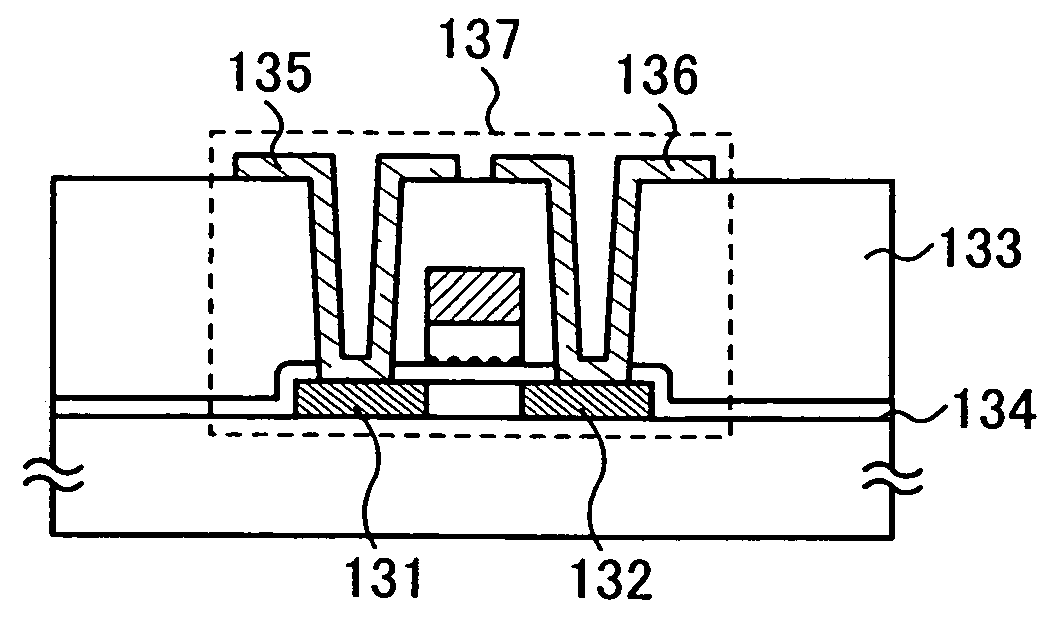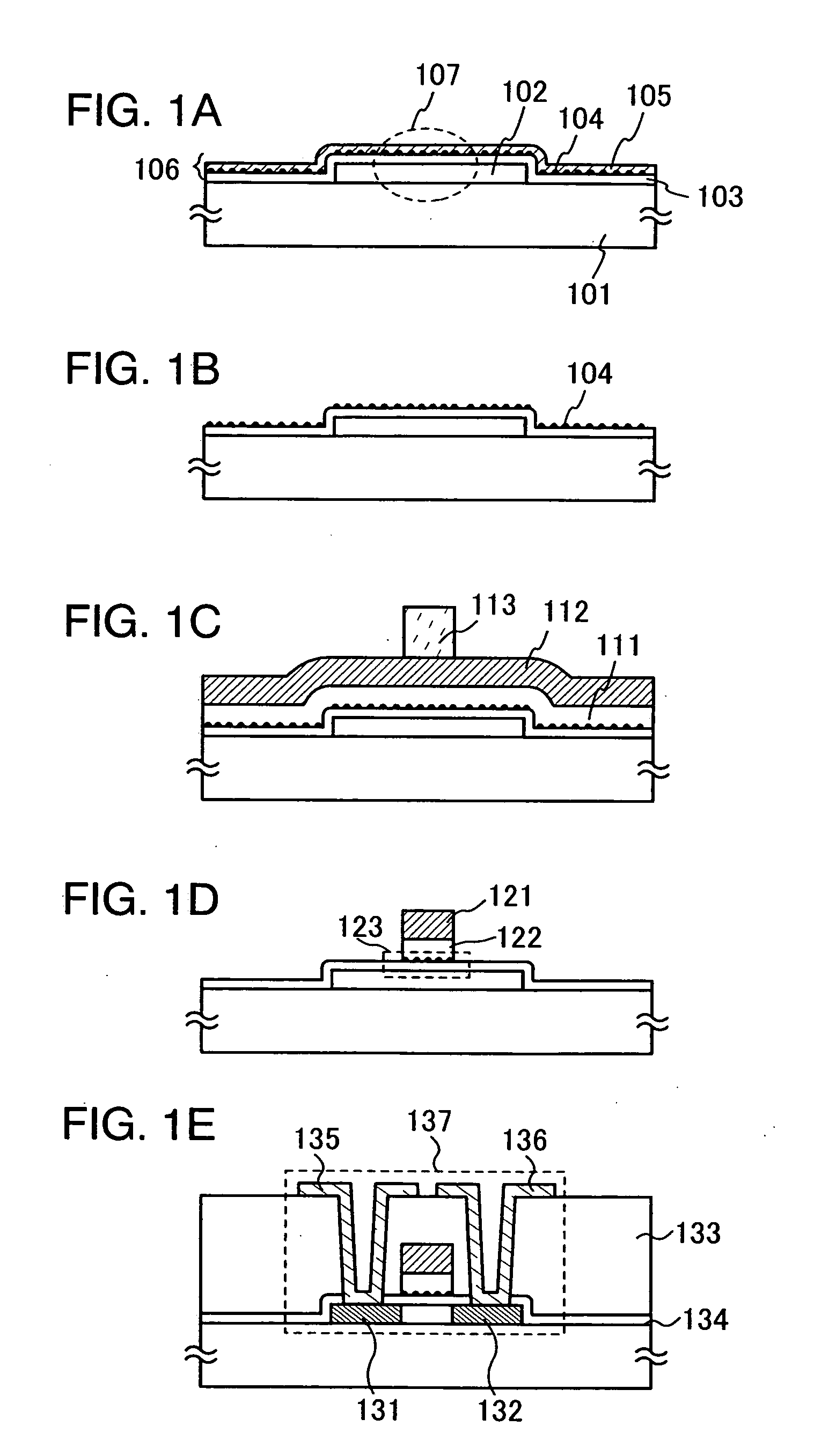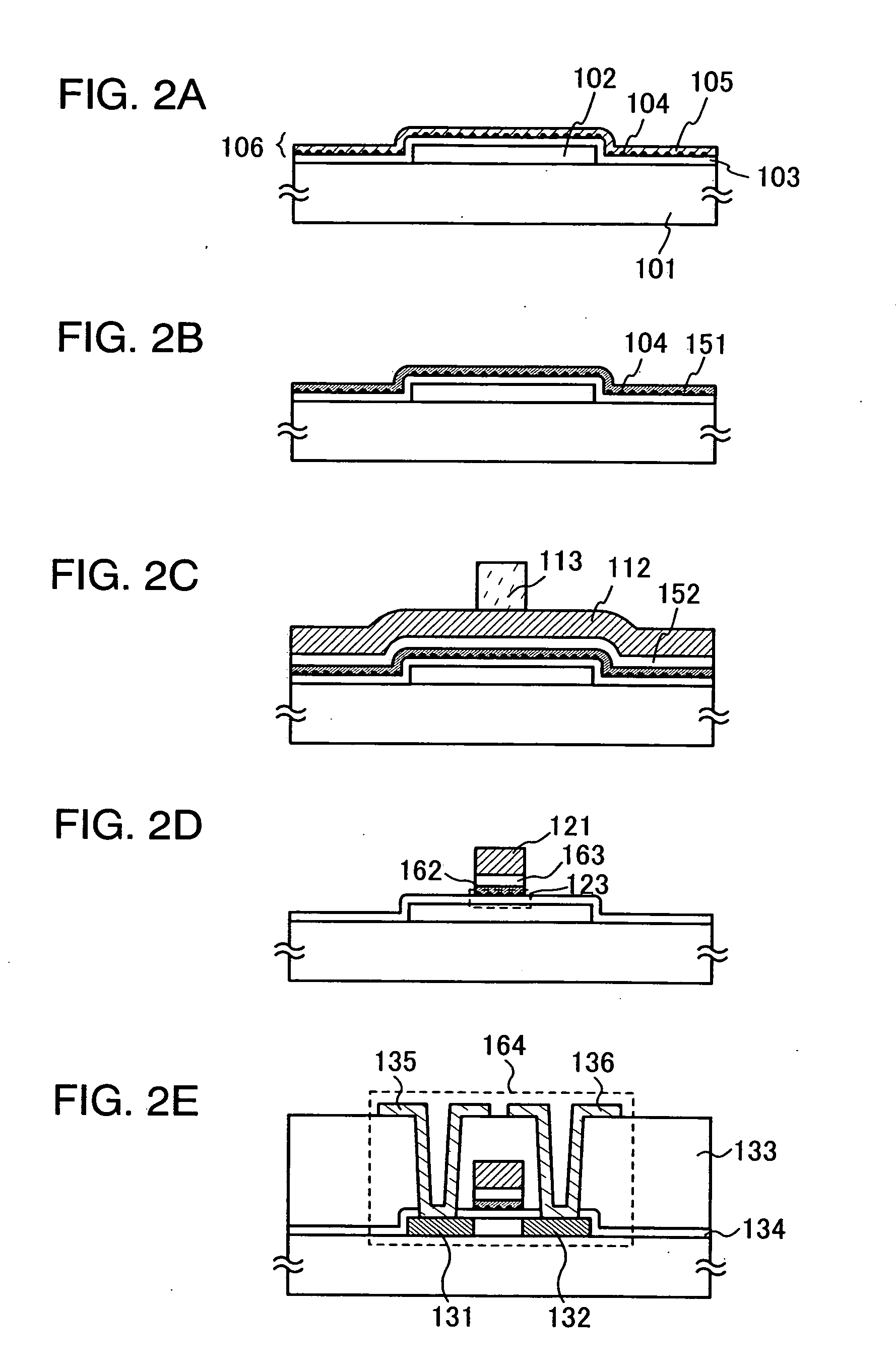Manufacturing method of semiconductor device
a manufacturing method and semiconductor technology, applied in the field of semiconductor devices, can solve the problems of difficult to control the diameter of the silicon dot, increase of density, and difficulty in increasing the variation of the threshold voltage, and achieve the effects of high reliability of semiconductor devices, low cost, and increased density of silicon particles to serve as charge accumulating layers
- Summary
- Abstract
- Description
- Claims
- Application Information
AI Technical Summary
Benefits of technology
Problems solved by technology
Method used
Image
Examples
embodiment mode 1
[0040] Embodiment Mode 1 describes a manufacturing process of a nonvolatile memory having silicon dots with reference to FIGS. 1A to 1E.
[0041] As shown in FIG. 1A, a semiconductor region 102 is formed over a substrate 101. Then, a first insulating film 103 is formed over the substrate and the semiconductor region. A first conductive layer 106 is formed over the first insulating film 103. The first conductive layer 106 includes silicon particles 104 and a conductive layer 105.
[0042] As the substrate 101, a glass substrate, a quartz substrate, a ceramic substrate, a plastic substrate, a stainless substrate, a synthetic resin substrate, a flexible substrate, a single crystal semiconductor substrate (typically, an n-type or p-type single crystal silicon substrate, GaAs substrate, InP substrate, GaN substrate, SiC substrate, or ZnSe substrate) and the like can be nominated. An SOI (Silicon on Insulator) substrate may also be used. In the case of using any one of these substrates, a bas...
embodiment mode 2
[0084] Embodiment Mode 2 describes a manufacturing method of a memory transistor in which an insulating film is formed by oxidizing a conductive layer over silicon particles as in Embodiment Mode 1 with reference to FIGS. 2A to 2E.
[0085] As shown in FIG. 2A, a semiconductor region 102 and a first insulating film 103 are formed over a substrate 101 according to Embodiment Mode 1. Then, a first conductive film 106 containing silicon particles 104 and a conductive layer 105 is formed over the first insulating film 103 by a sputtering method. Here, a solid solution containing silicon that exceeds solid solubility limit with respect to a metal element is used as a target in the sputtering. As the metal element that can form a solid solution with silicon, metal elements such as berylium (Be), aluminum (Al), zinc (Zn), gallium (Ga), germanium (Ge), silver (Ag), cadmium (Cd), indium (In), tin (Sn), antimony (Sb), lead (Pb) and bismuth (Bi), which are solid-dissolved with silicon and are ea...
embodiment mode 3
[0097] Embodiment Mode 3 describes a manufacturing process of a memory transistor formed with different masks for a gate electrode and a floating gate electrode with reference to FIGS. 3A to 3E.
[0098] As shown in FIG. 3A, a semiconductor region 102 and a first insulating film 103 are formed over a substrate 101 according to Embodiment Mode 1. Then, a first conductive film 106 containing silicon particles 104 and a conductive layer 105 is formed over the first insulating film 103 by a sputtering method. As shown in FIG. 3B, the conductive layer 105 is removed as in Embodiment Mode 1 to expose silicon particles. A first mask pattern 171 is formed over the silicon particles 104 and the first insulating film 103. The first mask pattern 171 is a mask pattern for forming a floating gate electrode later.
[0099] The silicon particles are etched using the first mask pattern 171 to form a floating gate electrode 172 of silicon particles as shown in FIG. 3C. A second insulating film 111 and a...
PUM
| Property | Measurement | Unit |
|---|---|---|
| width | aaaaa | aaaaa |
| width | aaaaa | aaaaa |
| thickness | aaaaa | aaaaa |
Abstract
Description
Claims
Application Information
 Login to View More
Login to View More - R&D
- Intellectual Property
- Life Sciences
- Materials
- Tech Scout
- Unparalleled Data Quality
- Higher Quality Content
- 60% Fewer Hallucinations
Browse by: Latest US Patents, China's latest patents, Technical Efficacy Thesaurus, Application Domain, Technology Topic, Popular Technical Reports.
© 2025 PatSnap. All rights reserved.Legal|Privacy policy|Modern Slavery Act Transparency Statement|Sitemap|About US| Contact US: help@patsnap.com



